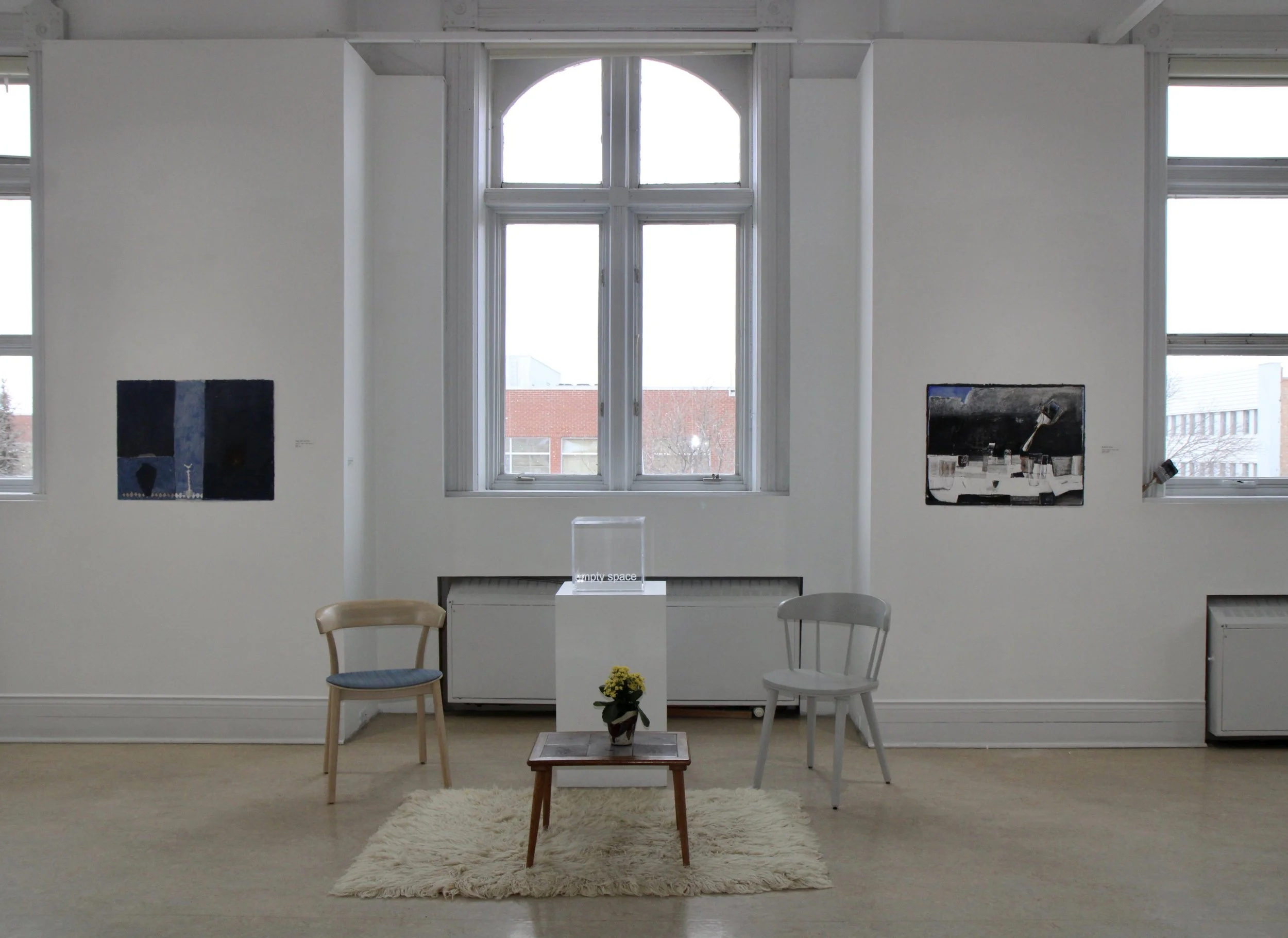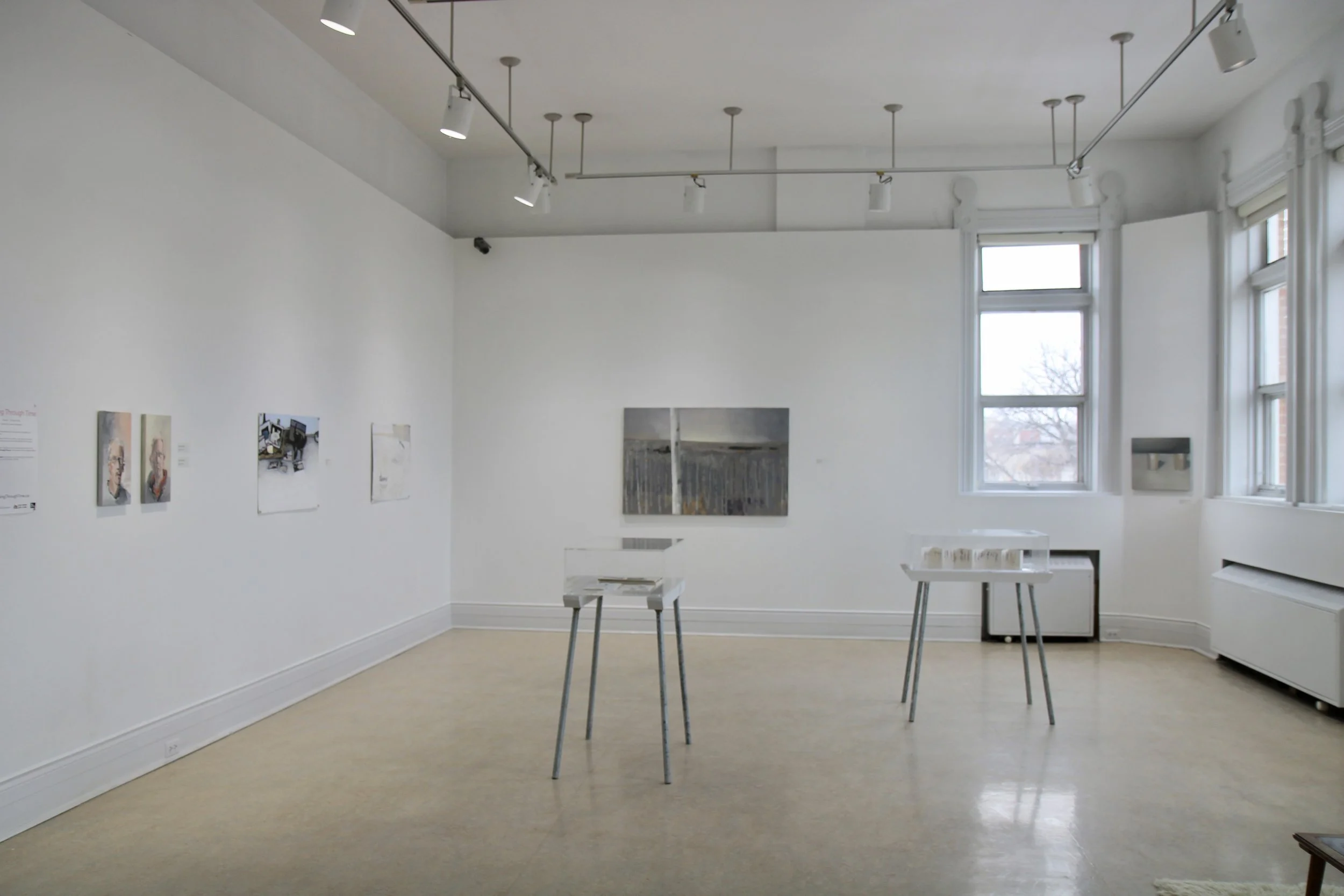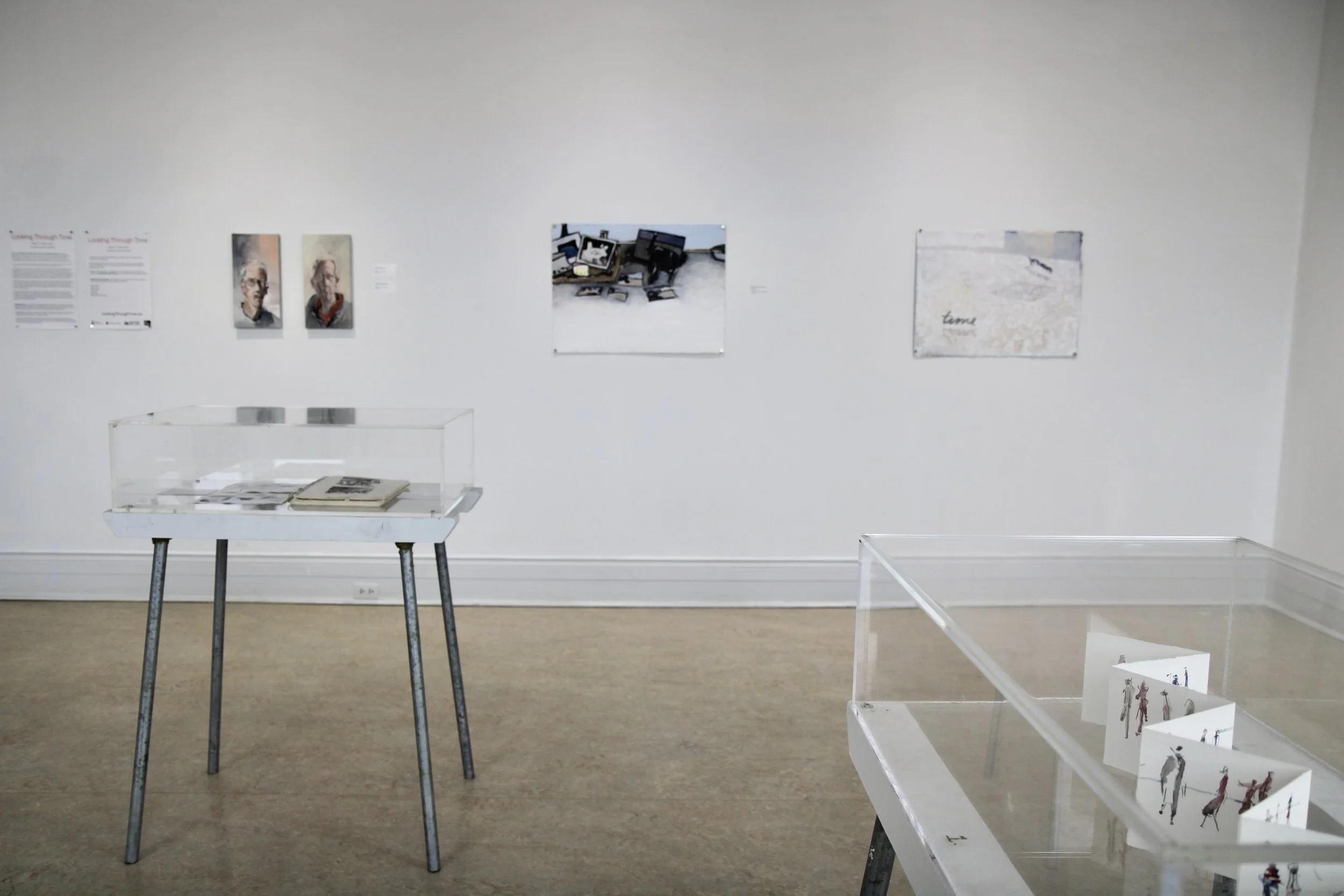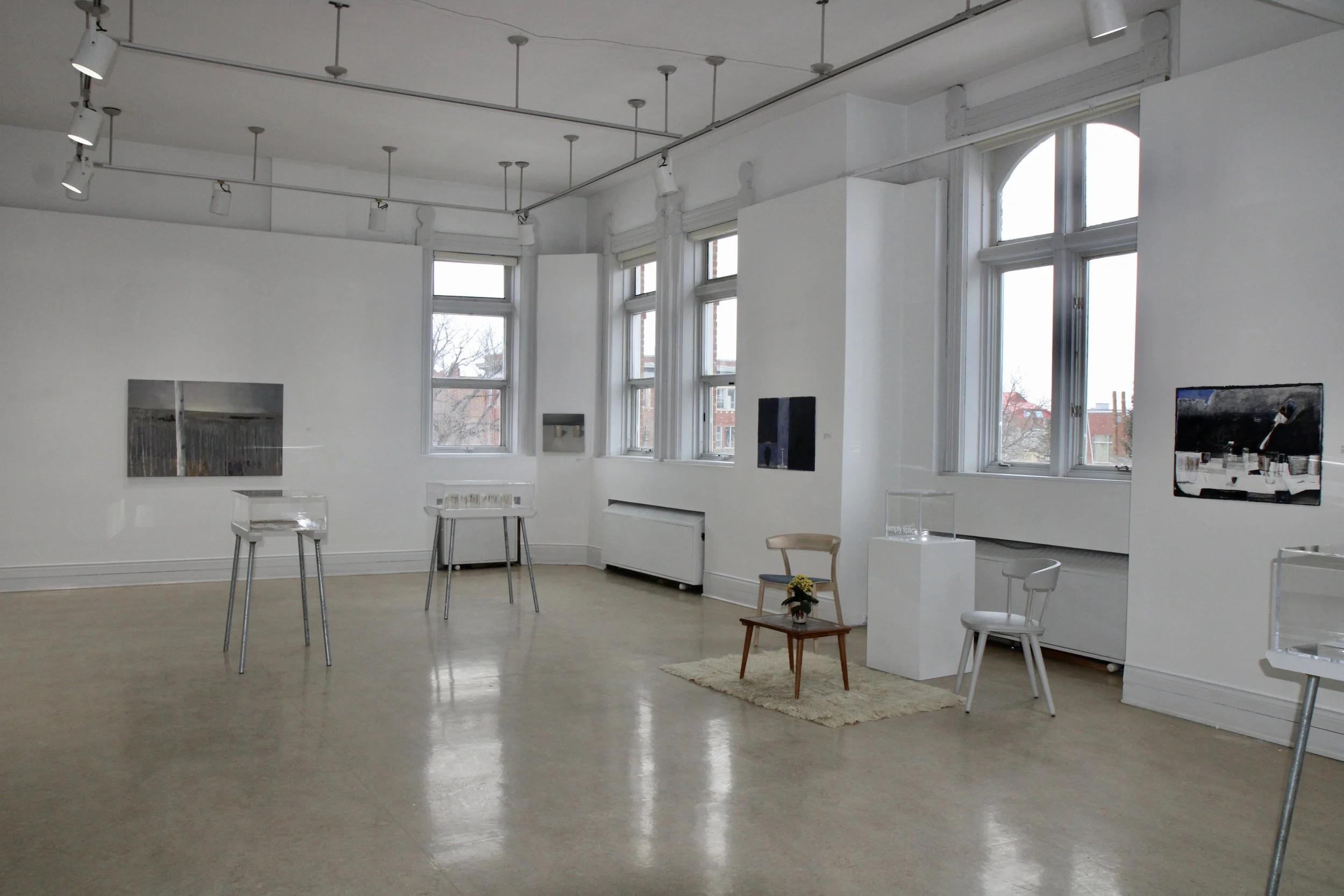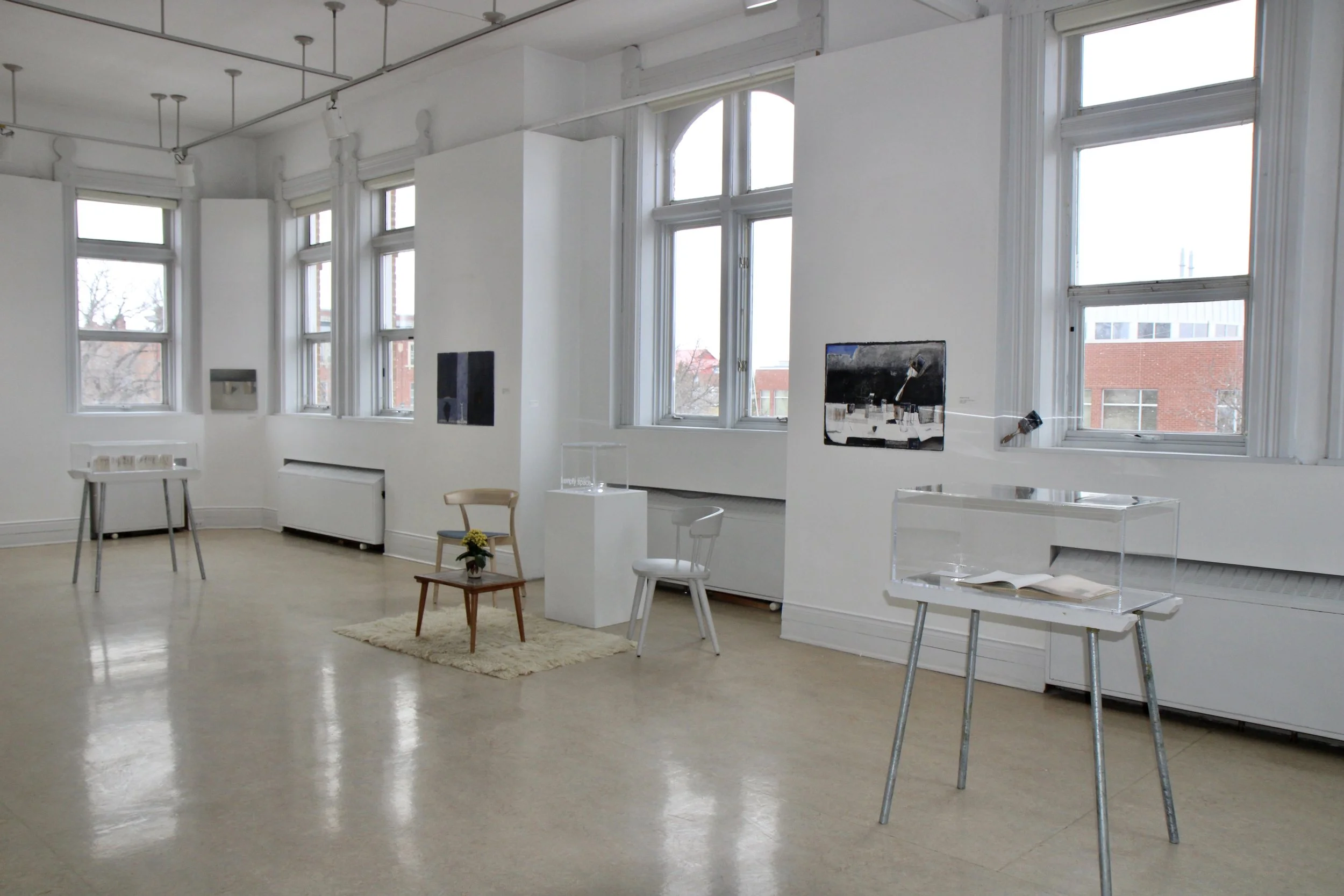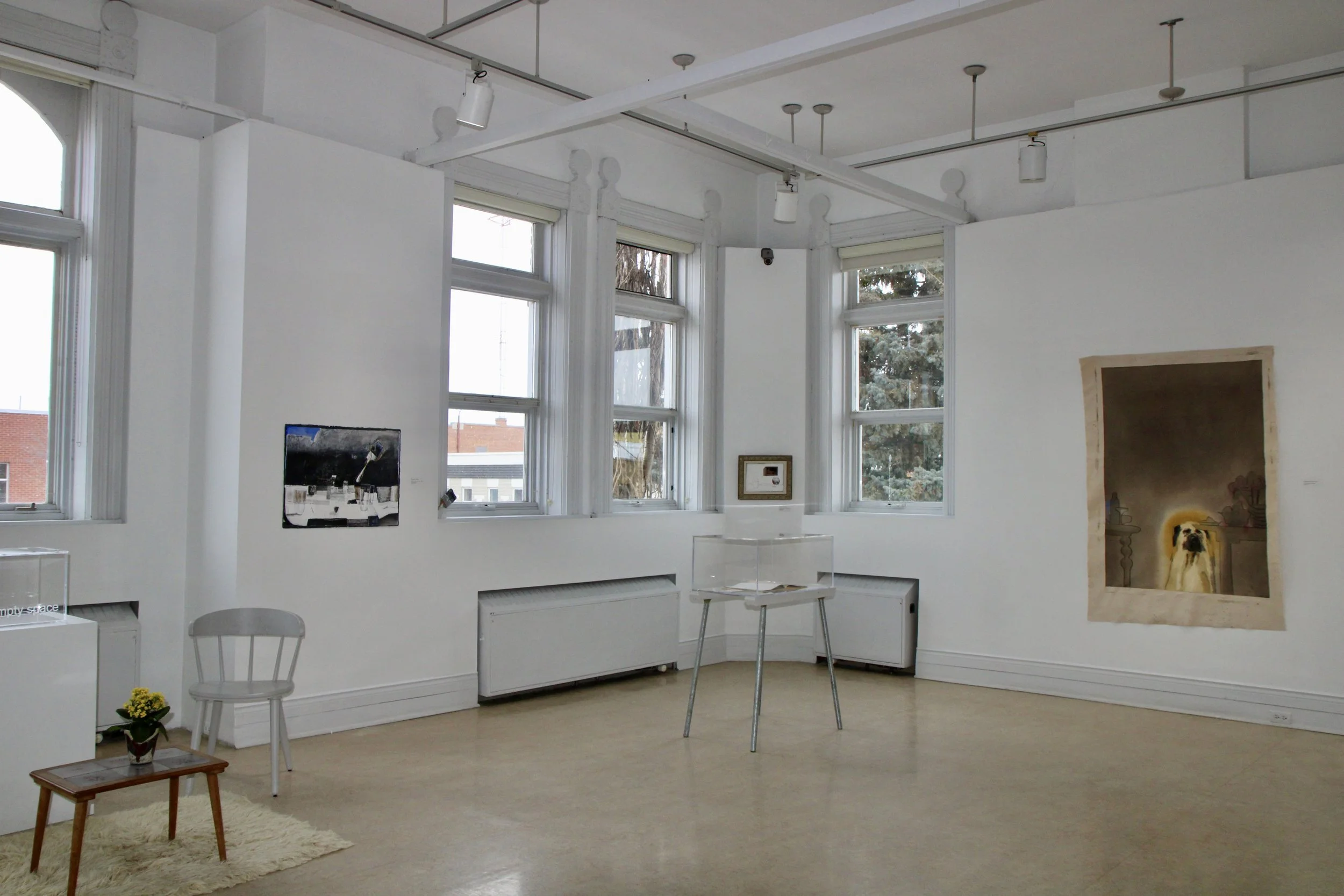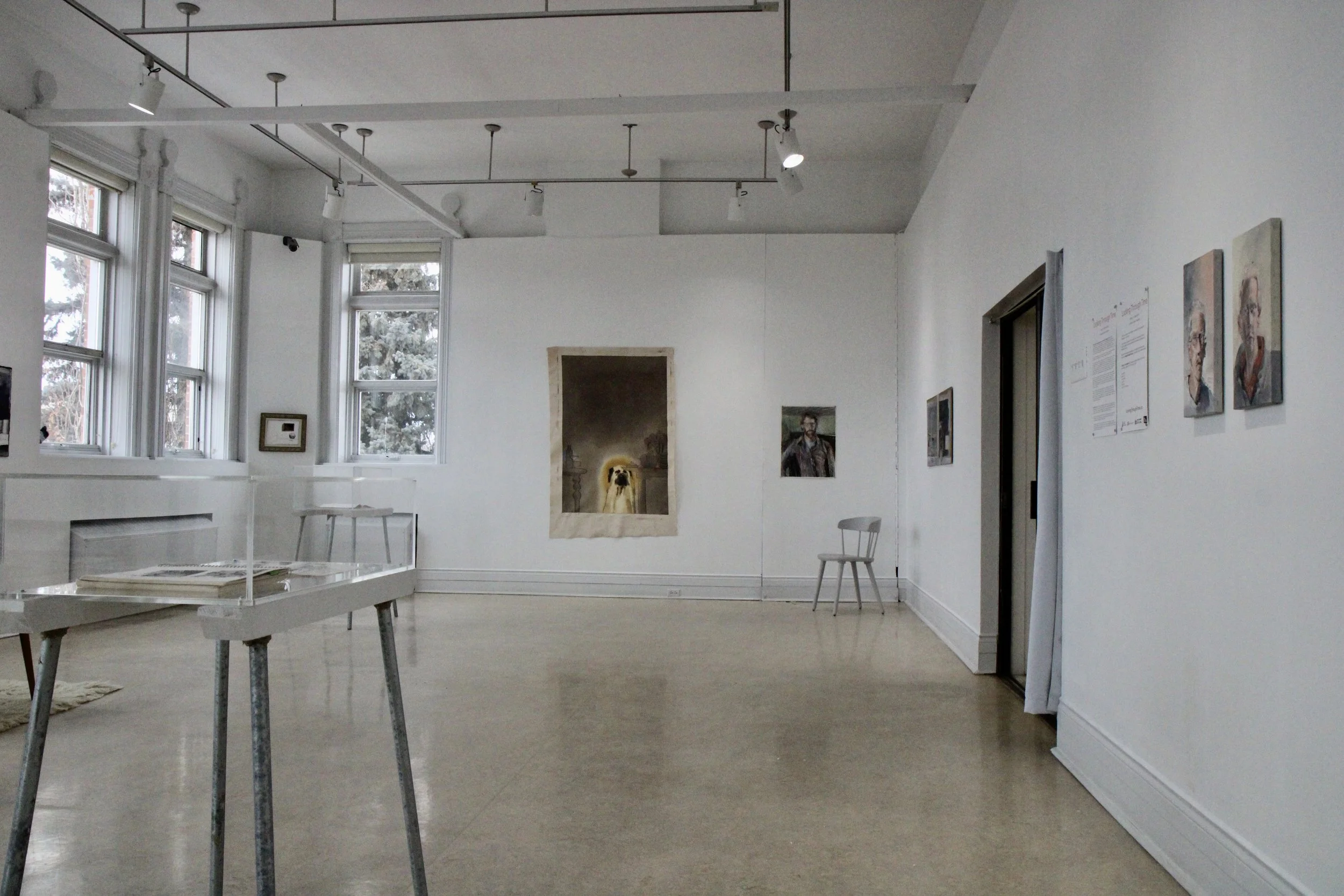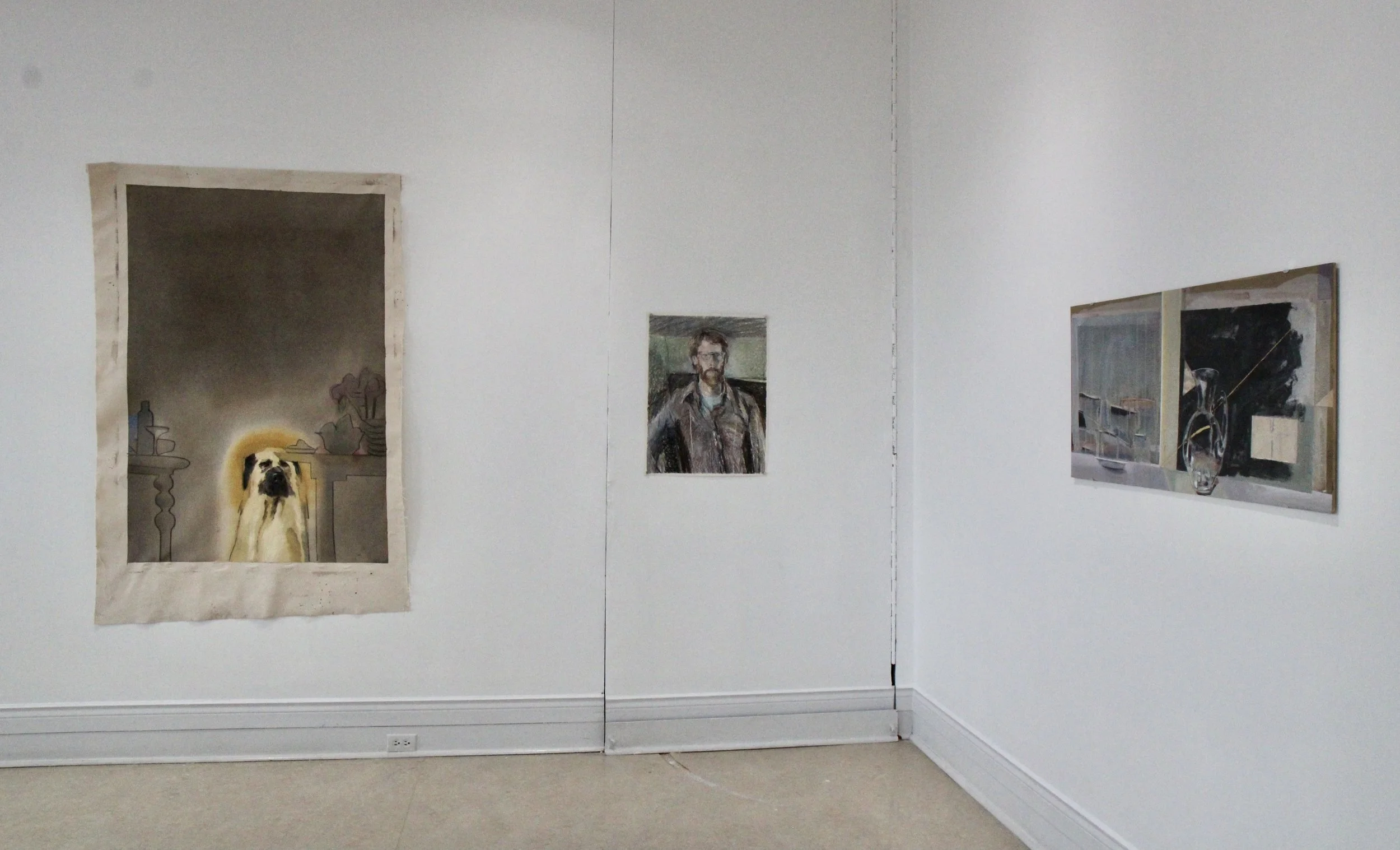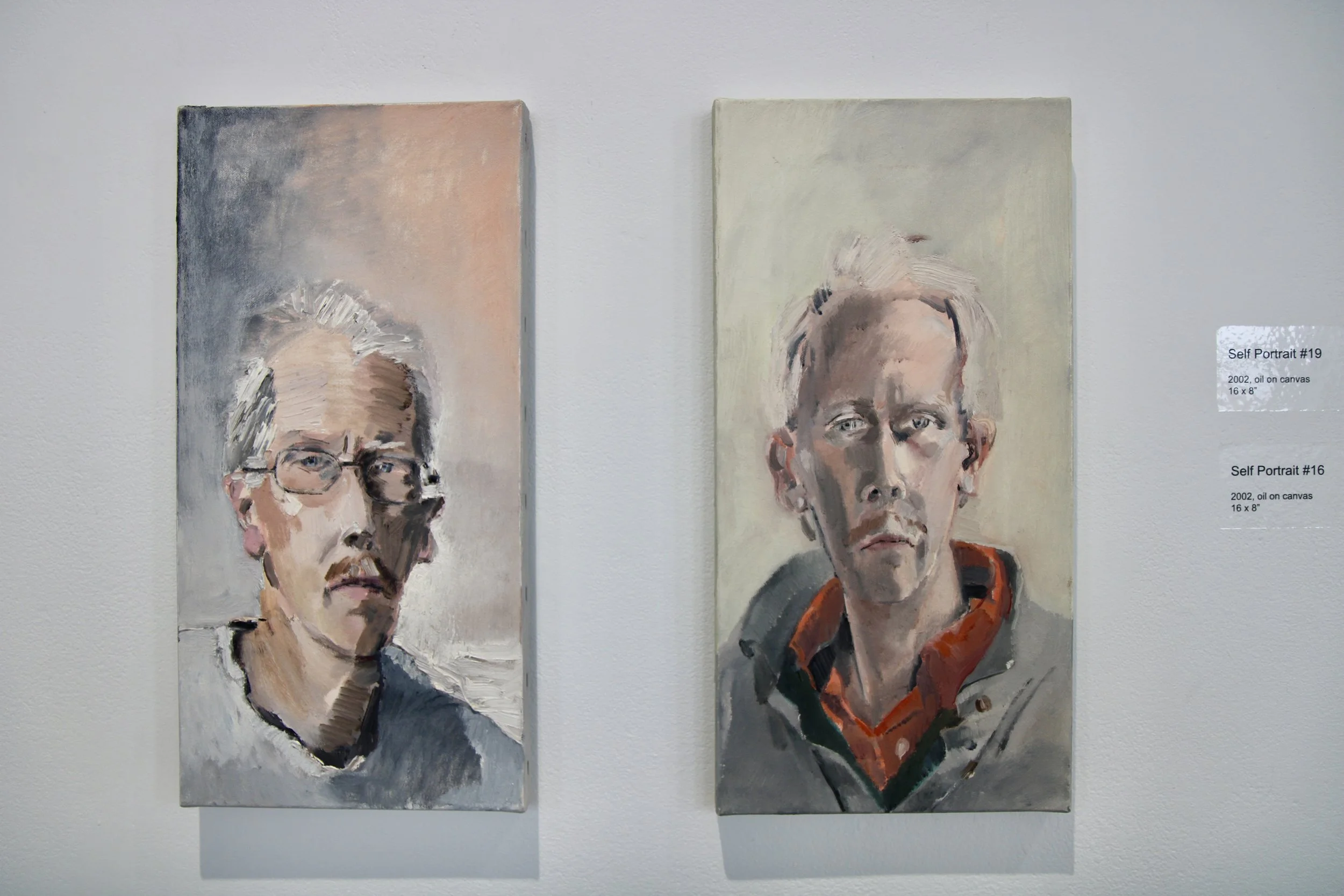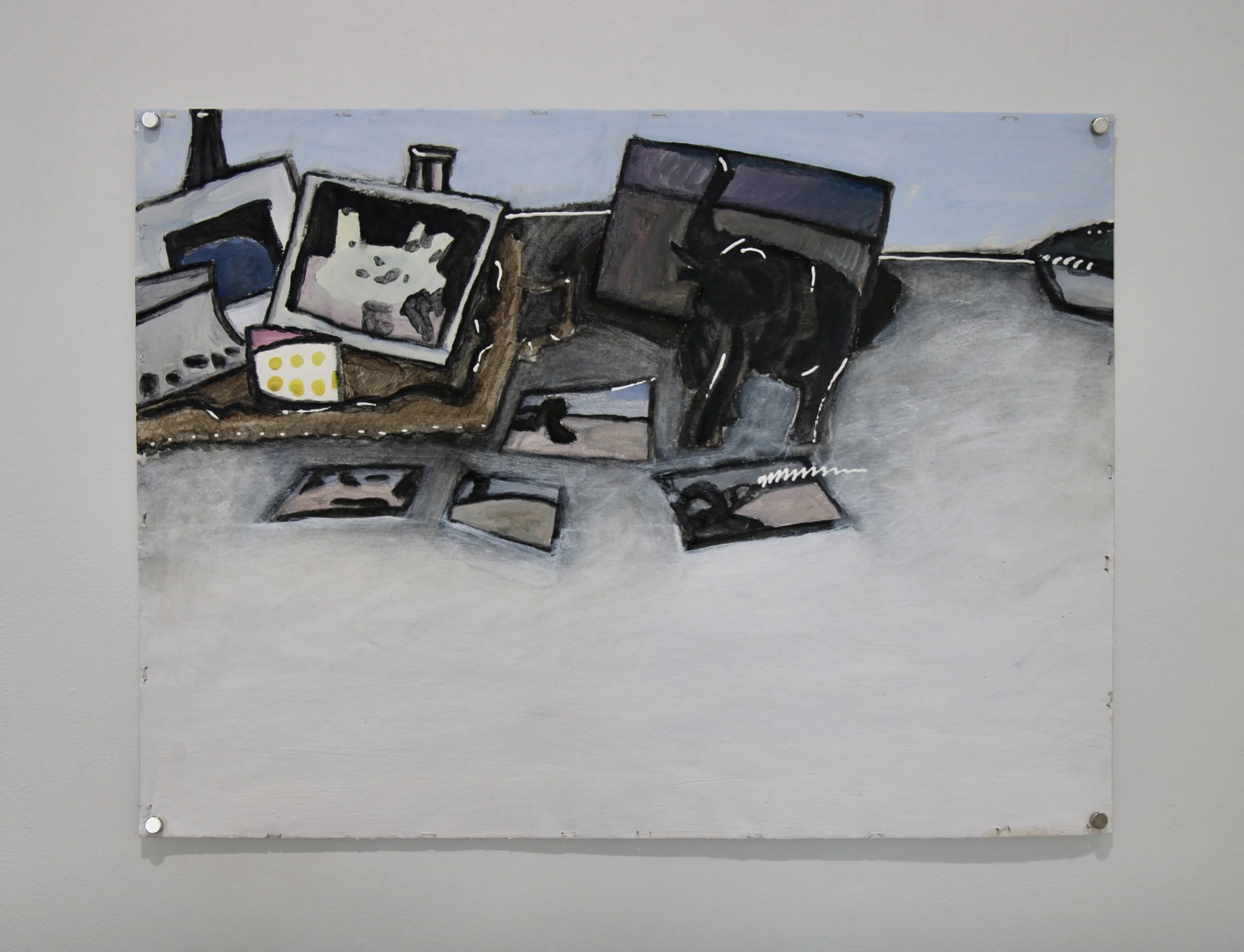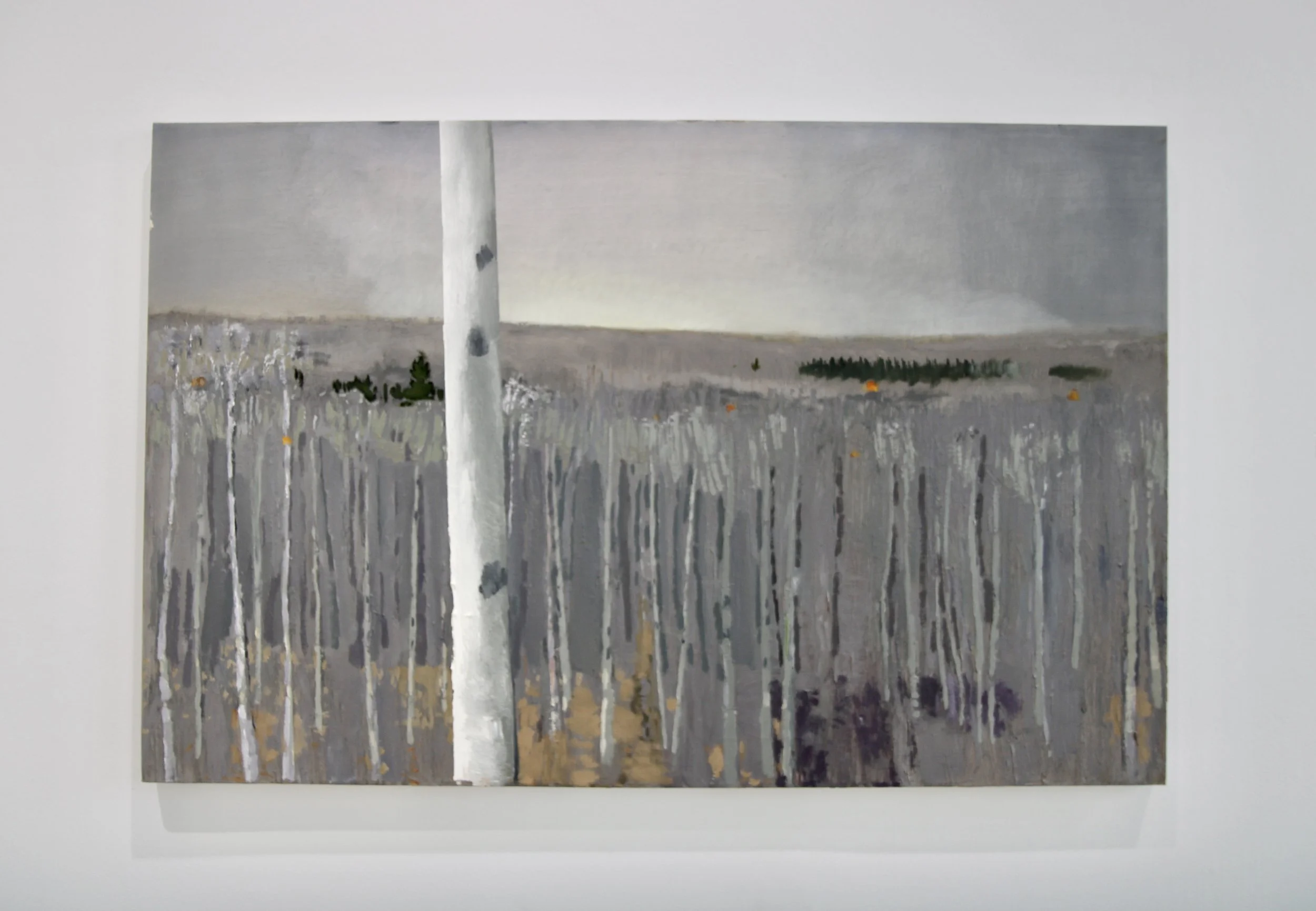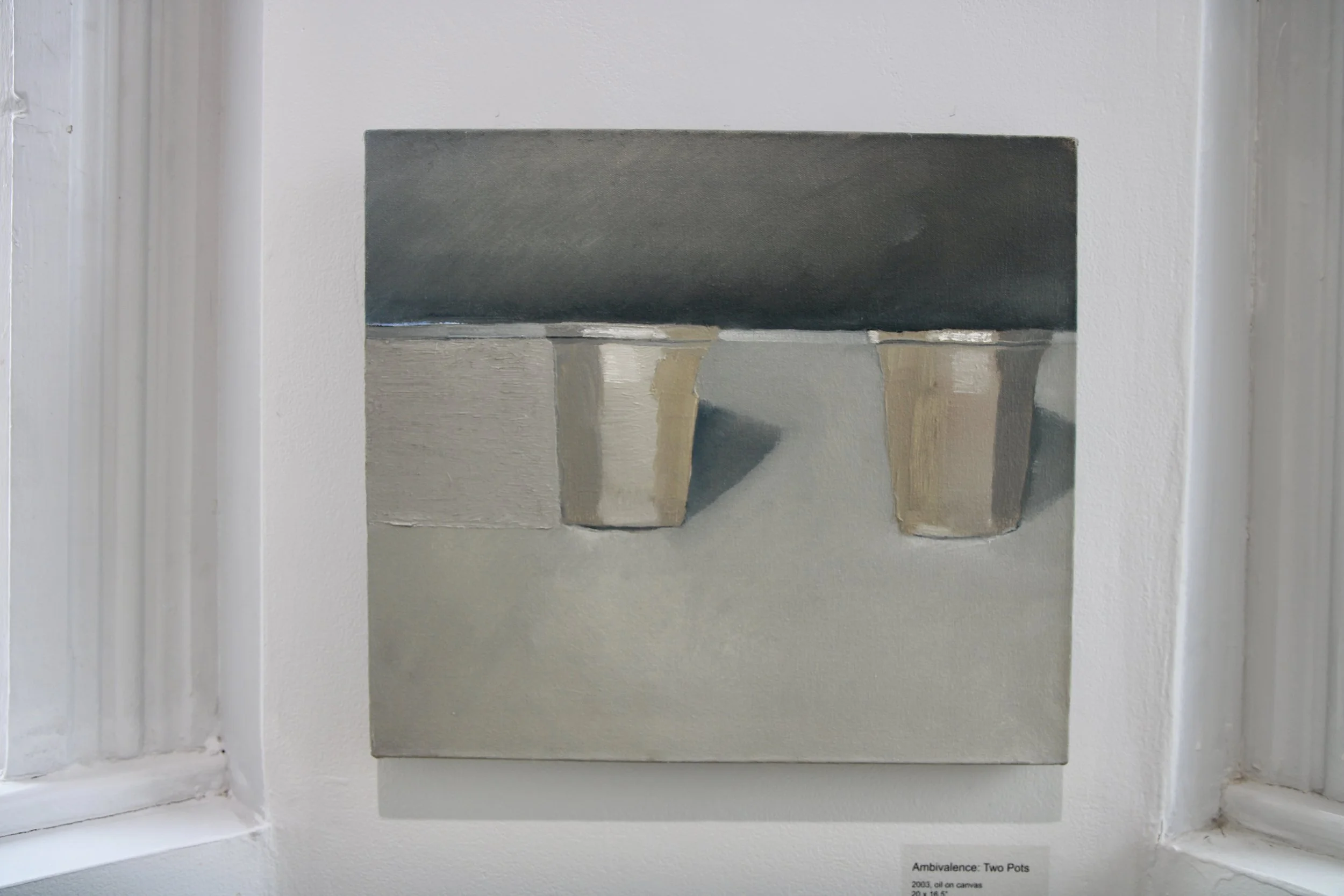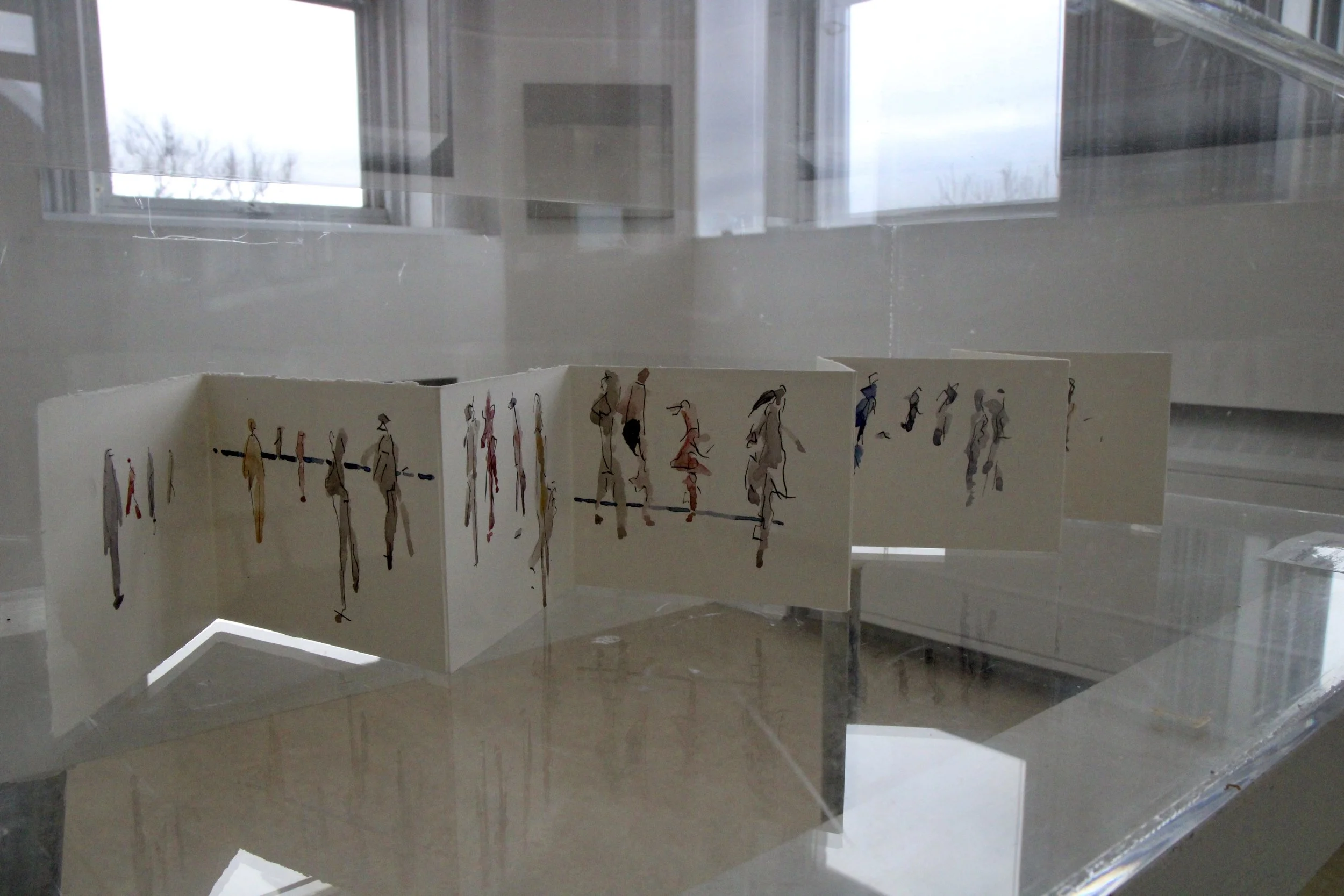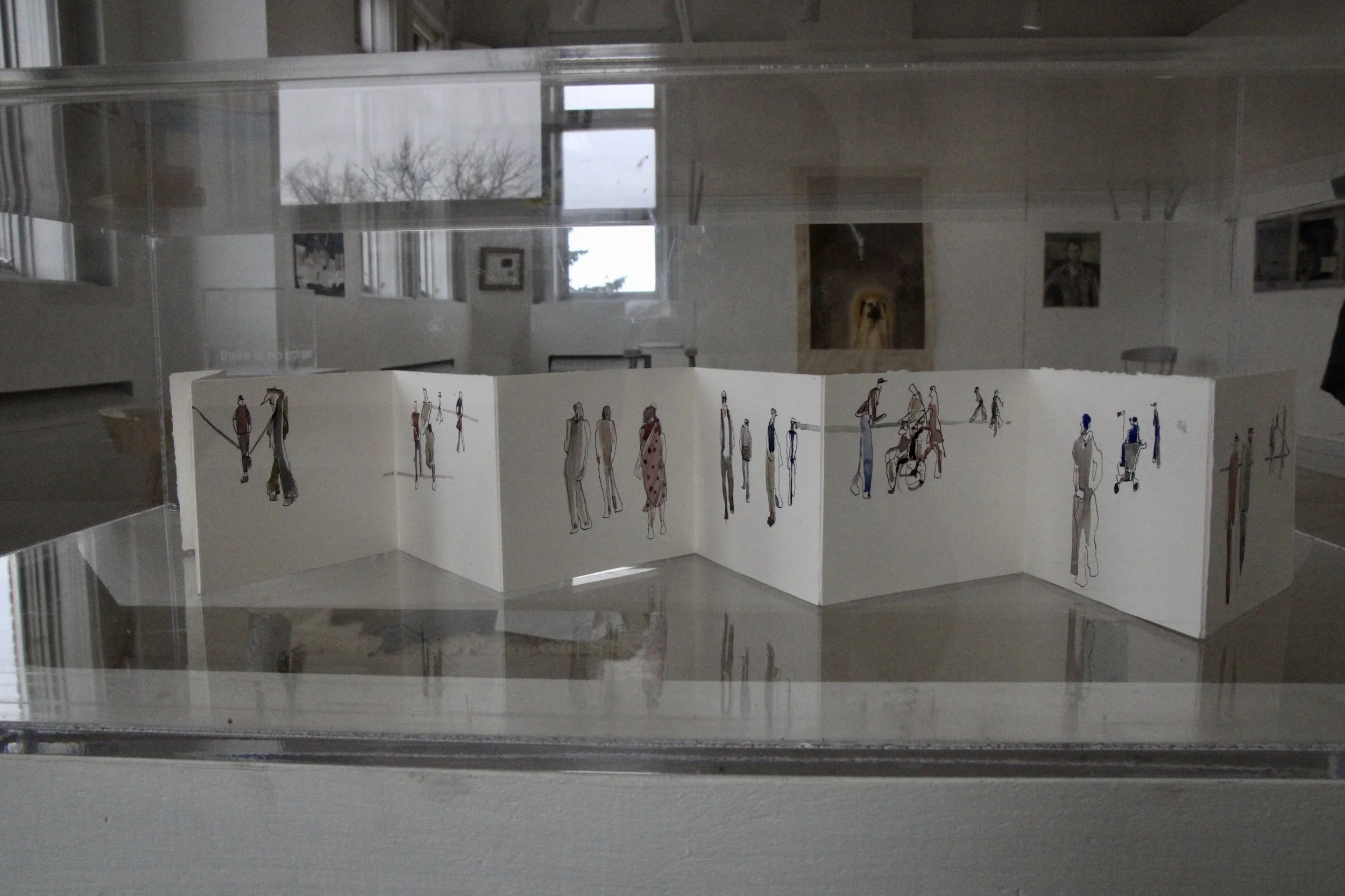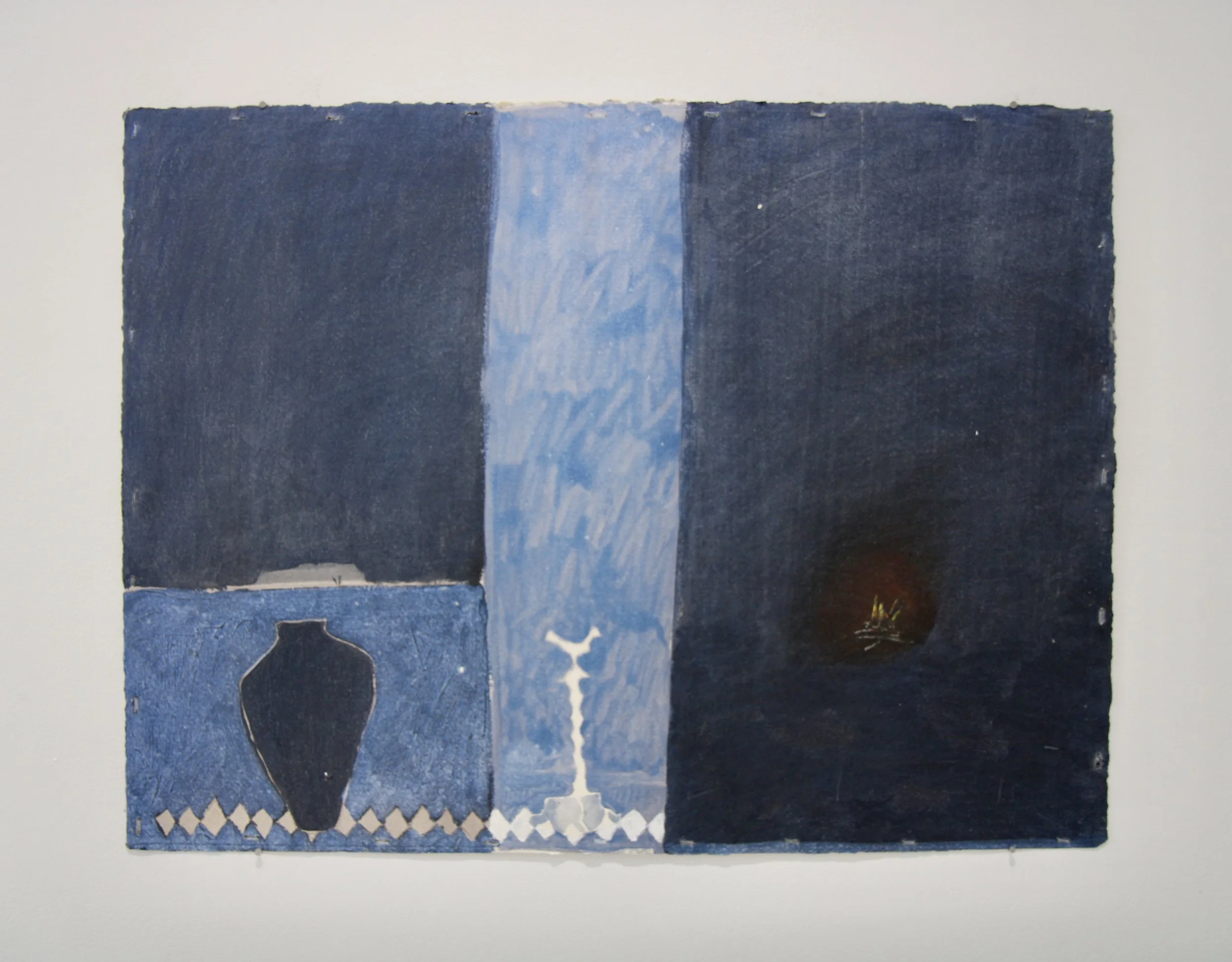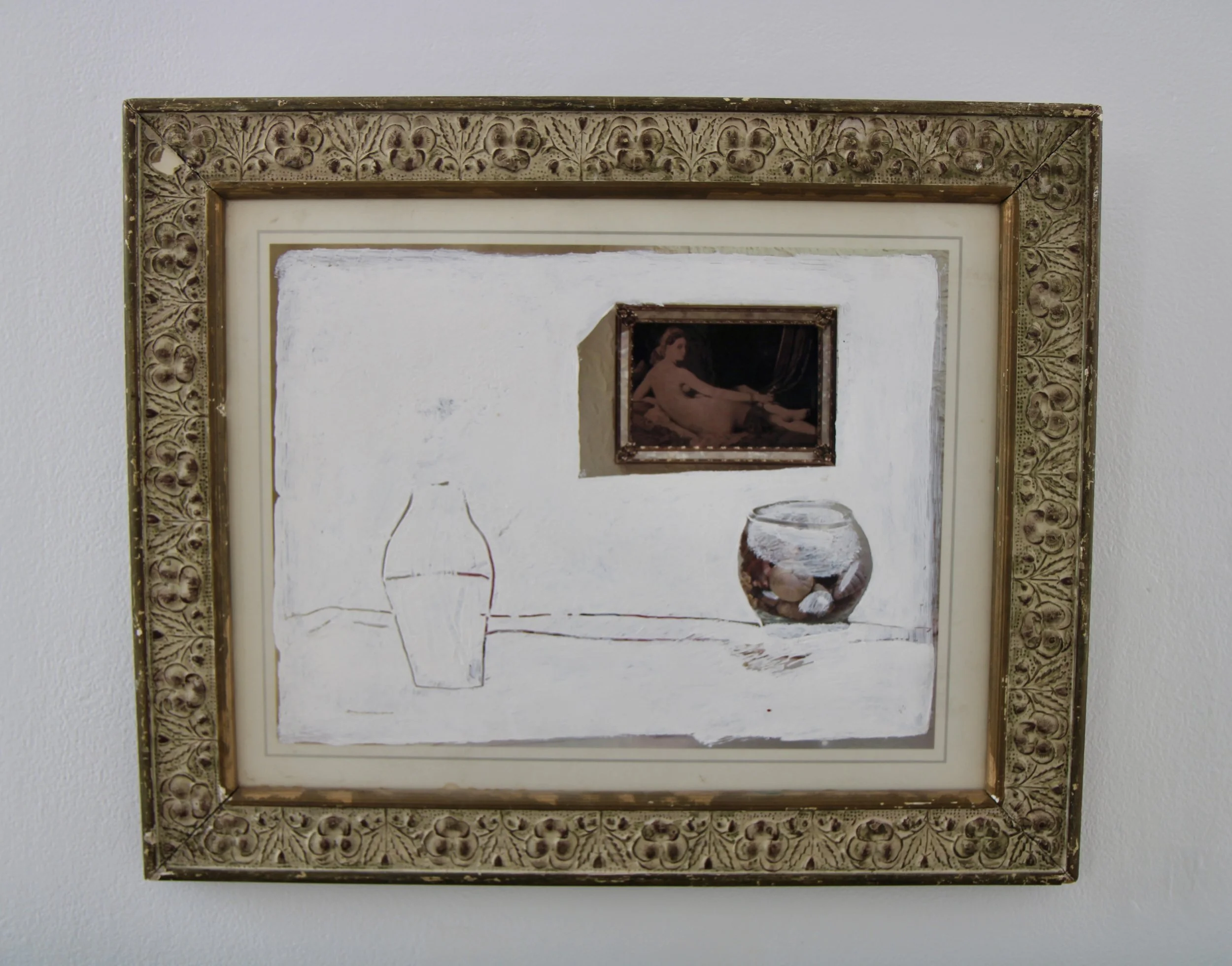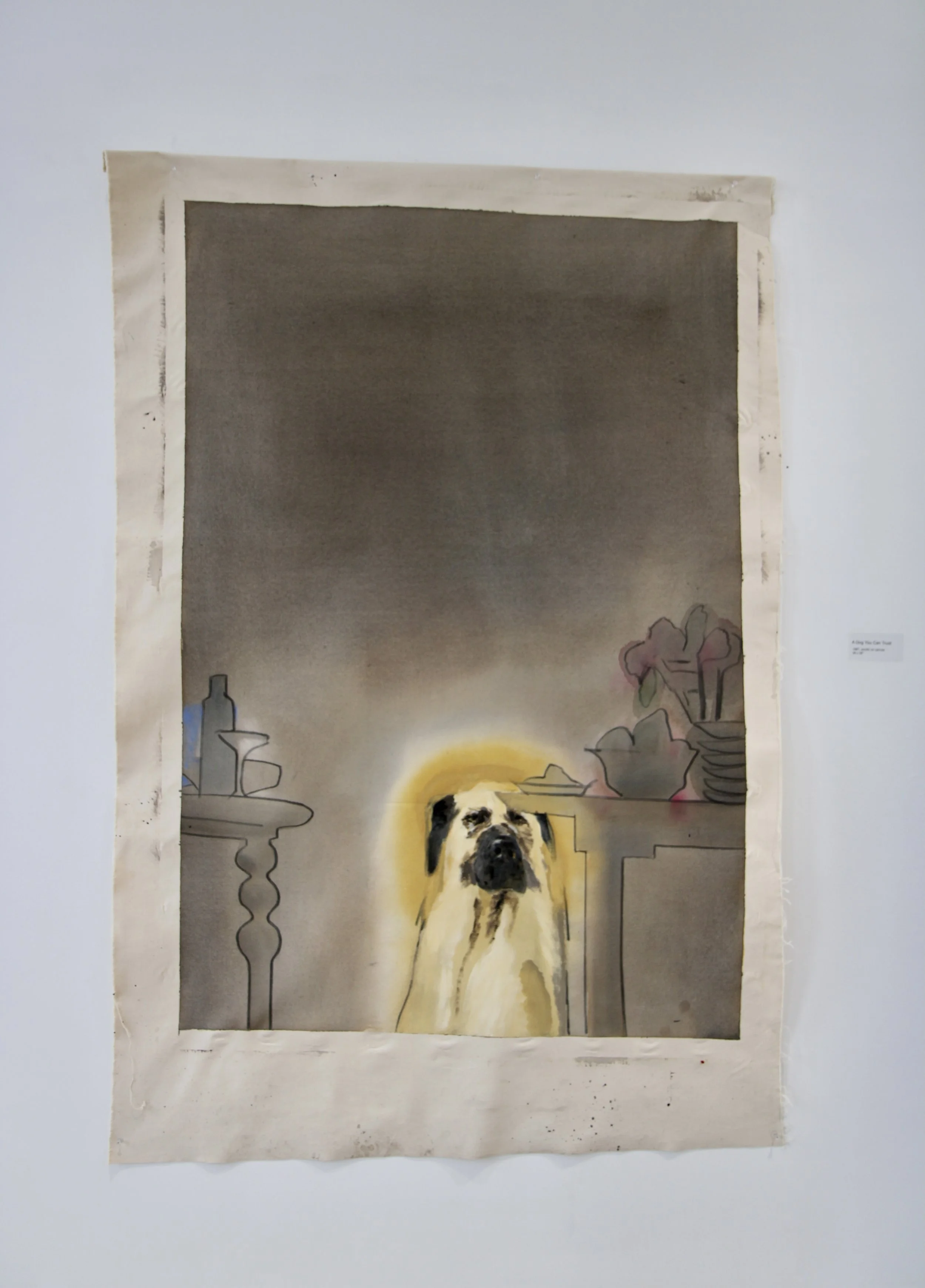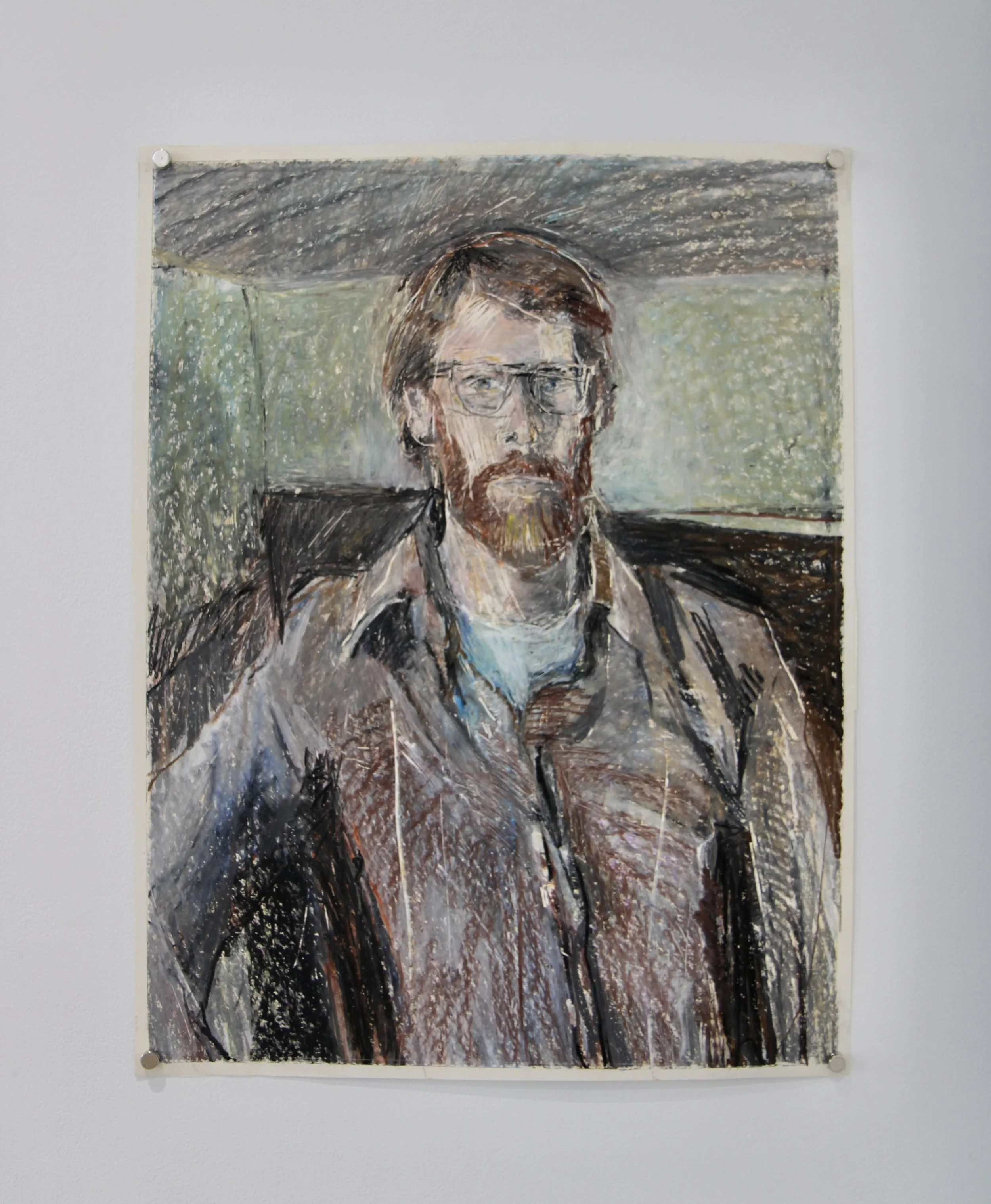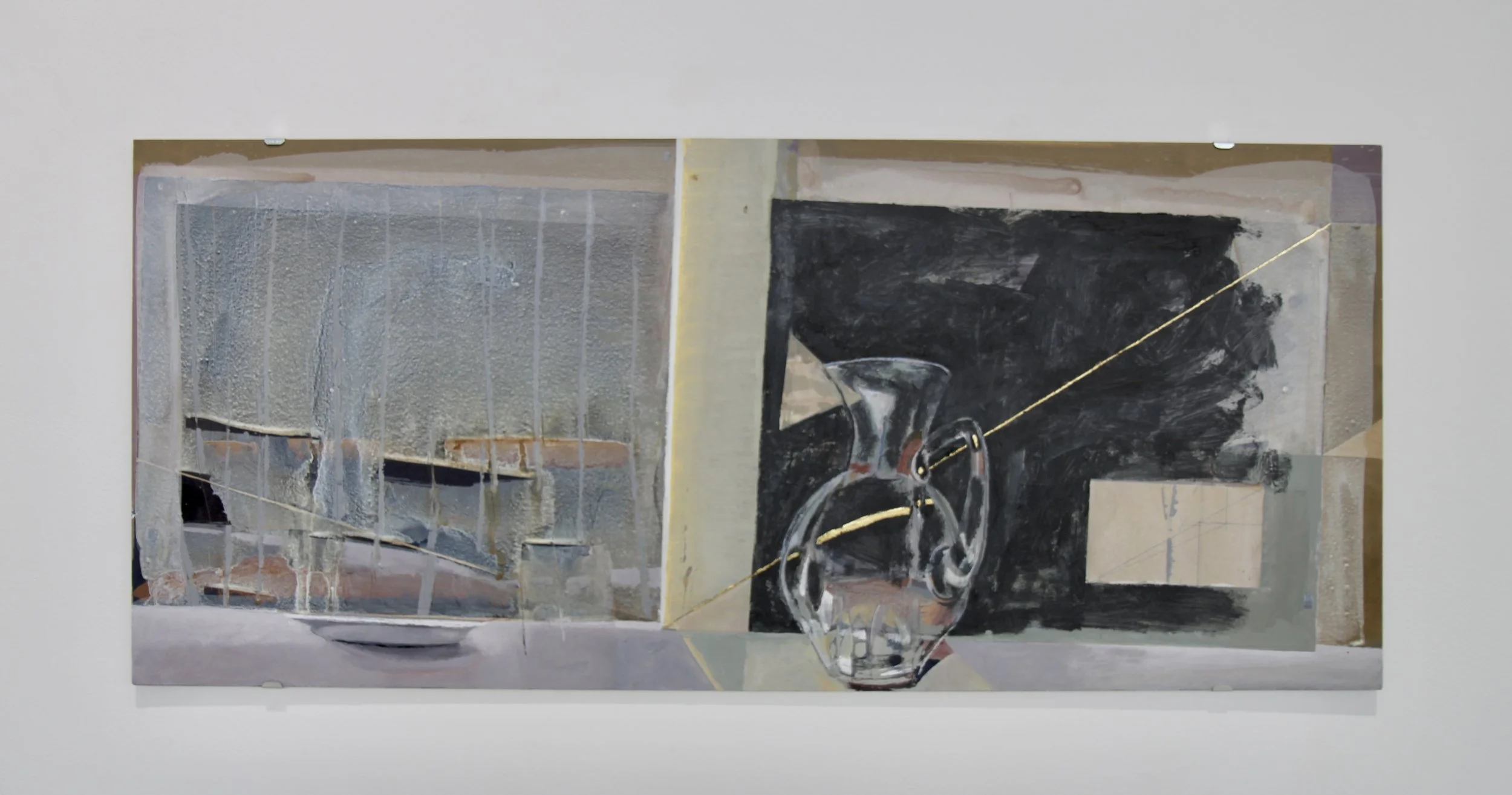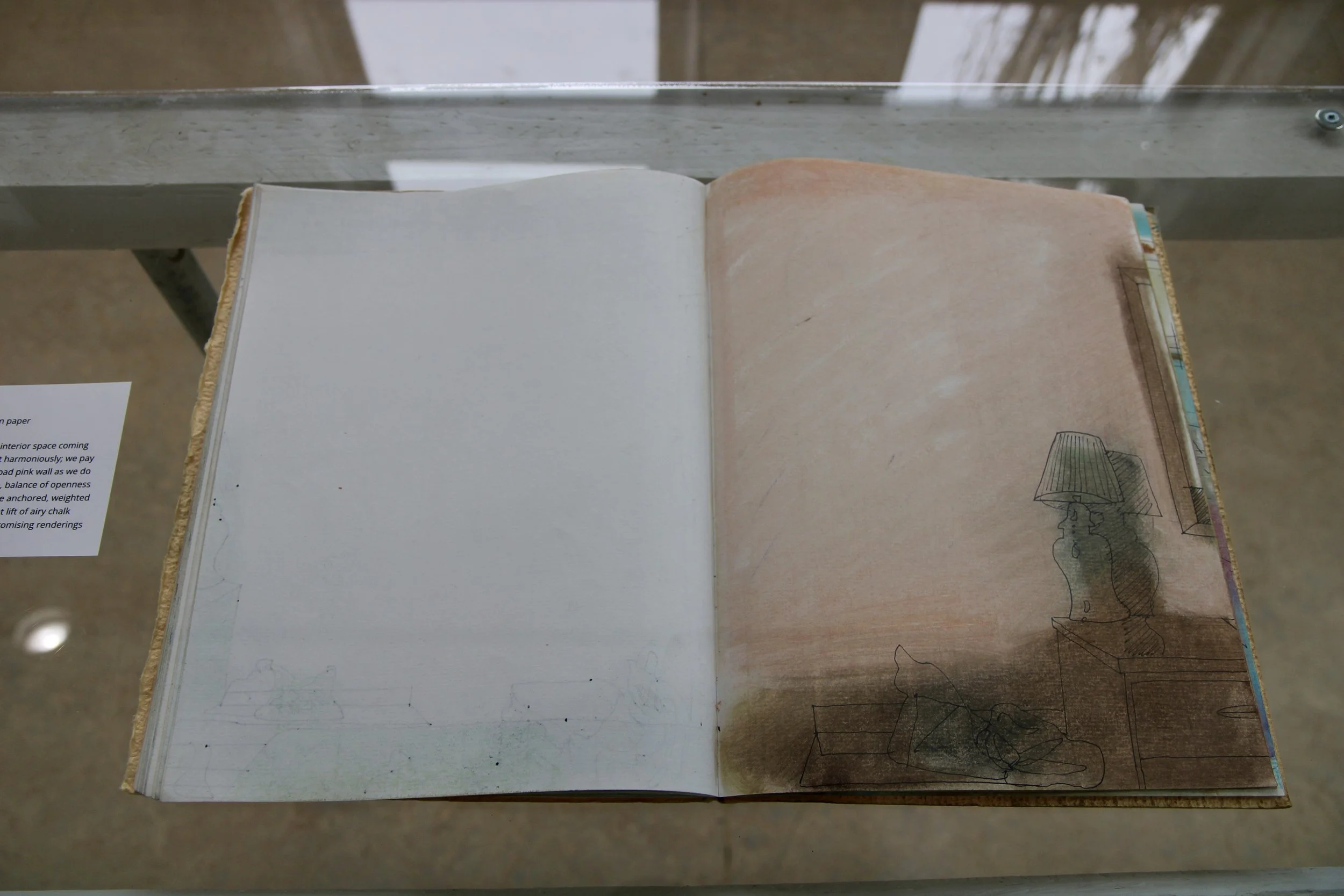Space & Still Life Together
In this display, space and materiality come together to create an experience that connects broad environments to the intimacy of personal objects.
Large, open areas that define compositions have come to be characteristic in George’s practice. In some cases, an expanse of space is linked to the physical places where George lives or spends time. In other scenarios, a swath of space is not defined, but is suggestive of a large tabletop, room, sky, or wall.
George is also known for his ongoing exploration of still lifes, showing meaningful objects that he has collected over time. Papers, rocks, cards, vessels, and more are kept for their individual qualities: the shape of a stone, the curve of a bowl, the texture of a book cover. Throughout his studio, George has created thoughtful, small arrangements of these items. The installations are present around every corner - on a tabletop, a bookshelf, in front of a window sill - creating a setting of intrigue and insight.
The subjects of still lifes are anything but still. Their surroundings, relationships with space, and shifting appearances (due, for example, to changing qualities of light) suggest constant change. In a painting, therefore, the depicted moment represents an illusion of stillness. A painting is not a moment of finality, but rather an opportunity to consider how objects exist through time.
While most of the works in this gallery show space in two-dimensions, There is No Empty Space takes the concept to three dimensions. It invites us to look within the transparent cube; we eventually begin to see through to other parts of the room. Like the depictions of glass vessels, windows, and mirrors that are present throughout George’s paintings, the plexiglass distorts reflections. It changes what we see through the plexiglass and how we see it, making a different version of our realities.
The benefit of examining 50+ years of artwork is realizing that an art practice is characterized not only by the act of making, but by constant observation and contemplation. There is No Empty Space at once encloses and expands its environment. It turns its surroundings into an ever changing still life scene, creating a space of observation. It tells us that art opens up possibilities of perception, illuminating and inspiring our day-to-day lives.
Jesse Campbell, Curator
George Glenn, "Brusho's Ghost," 2008, mixed media on paper, 29.75 x 22.5”
George Glenn, "Self Portrait #19," "Self Portrait #16," 2002, oil on canvas, 16 x 8”
George Glenn, “Gray Still Life”, 1989, acrylic on paper, 29.5 x 22”
George Glenn, "Single Poplar," 1989, oil on canvas, 35 x 54"
George Glenn, “Ambivalence: Two Pots,” 2003, oil on canvas, 16.5 x 20"
George Glenn, “Accordion Drawing – Leporello #3,” 2003, ink and watercolour on paper
George Glenn, “Accordion Drawing – Leporello #3,” 2003, ink and watercolour on paper
George Glenn, “Vase, Bird, and Fire,” 1989, acrylic on paper, 22 x 29.5"
George Glenn, “Ingres Placemat” c. 1985, acrylic on composite placemat with flowered frame, 14 x 17.25"
George Glenn, "A Dog You Can Trust," 1987, acrylic on unstretched canvas, 58 x 29"
George Glenn, "Self Portrait After Haircut," 1981, oil pastel on paper, 24.75 x 19"
George Glenn, "Still Life with Golden Mean" 2008, acrylic on MDF board, 20 x 46"
George's Sketchbook, 1975-76, chalk pastel and ink on paper
